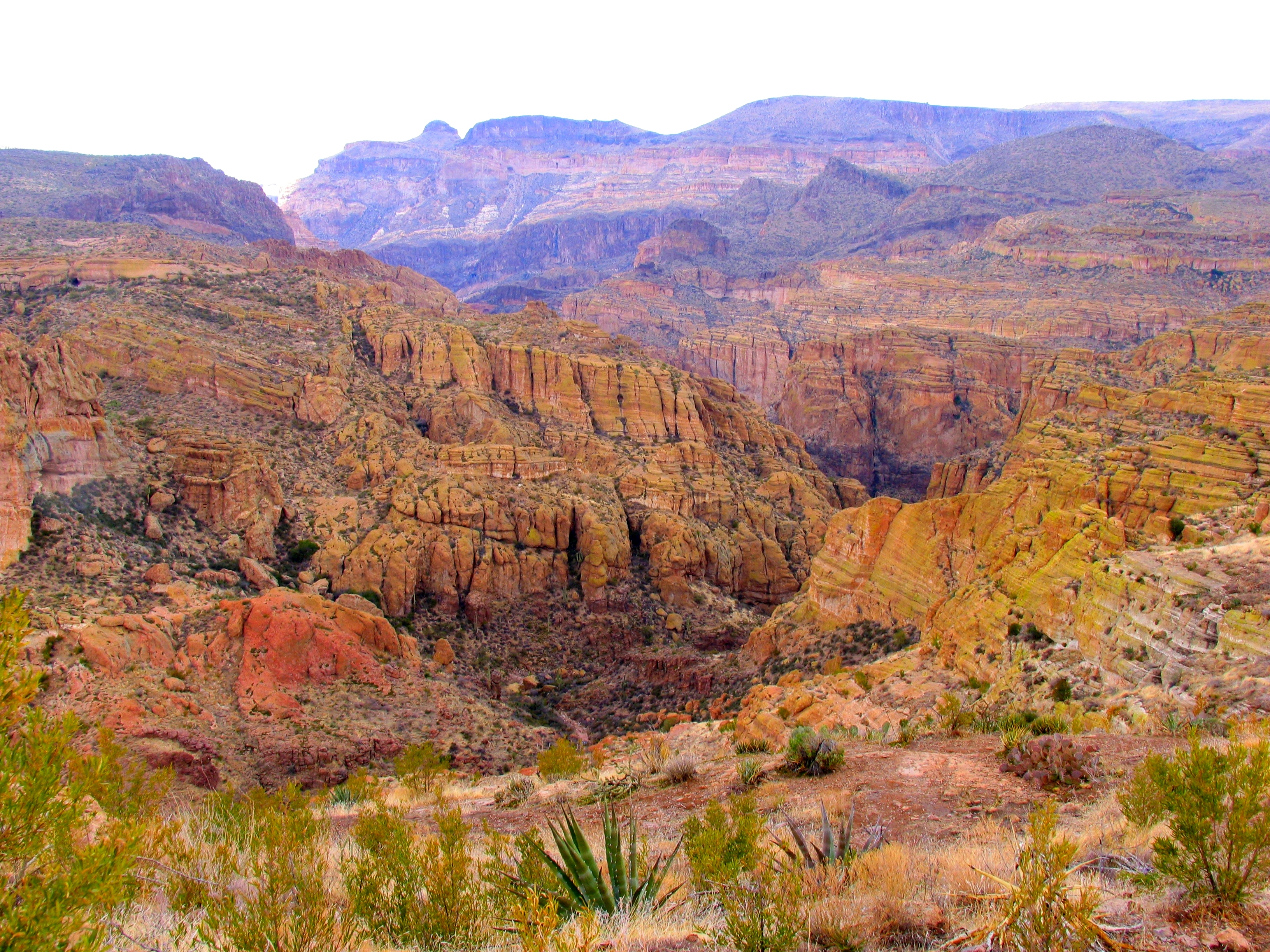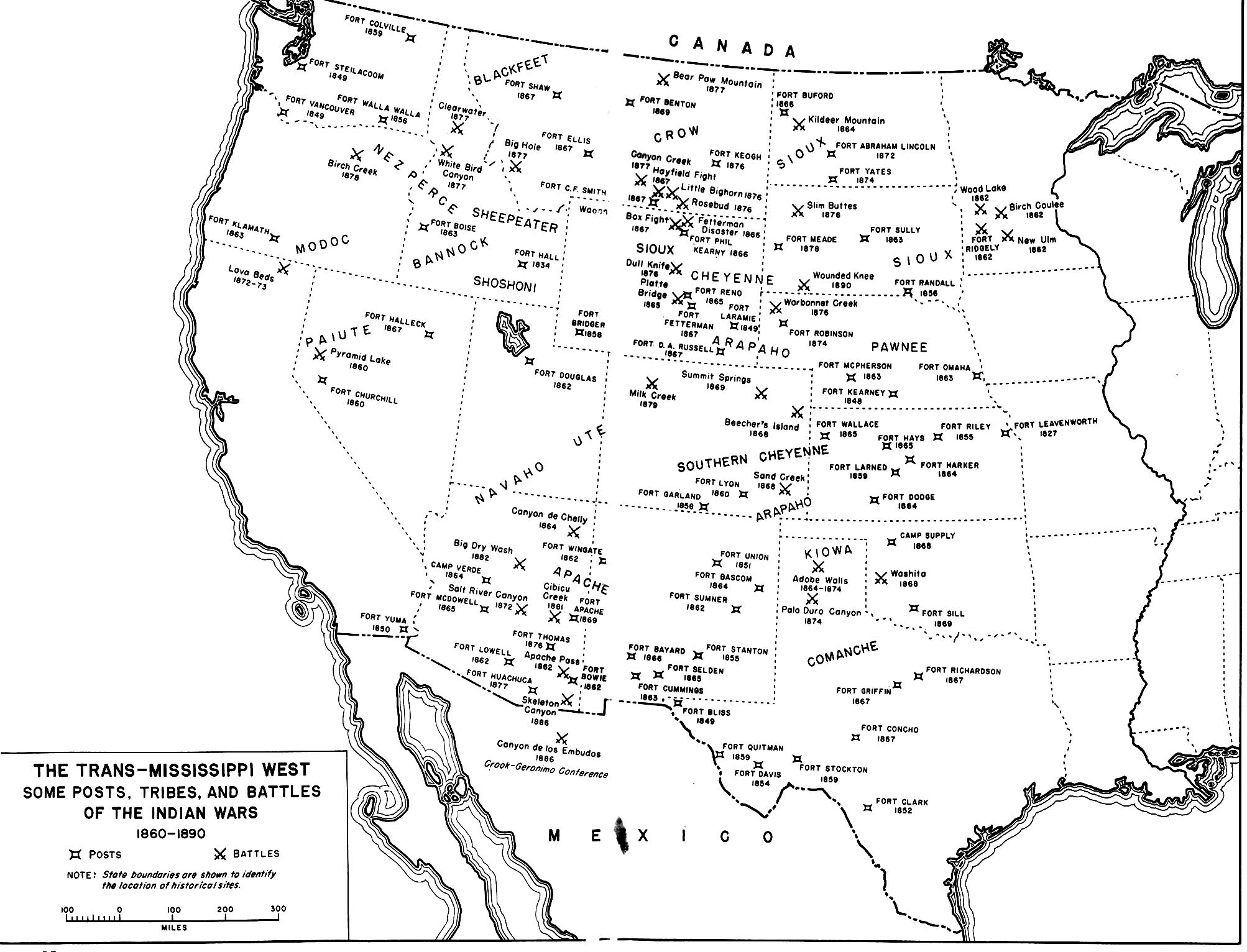|
Salt River (Arizona)
The Salt River (Spanish language, Spanish: , O'odham language, O'odham [Pima]: , Yavapai language, Yavapai: or , Maricopa language: Va Shly'ay) is a river in Gila County, Arizona, Gila and Maricopa County, Arizona, Maricopa counties in Arizona, United States, that is the largest tributary of the Gila River. The river is about 200 miles (320 km) long.Calculated with Google Maps and Google Earth Its drainage basin covers about 13,700 square miles (35,000 km2). The longest of the Salt River's many tributaries is the 195-mile (314 km) Verde River. The Salt's headwaters tributaries, the Black River and East Fork, increase the river's total length to about 300 miles (480 km). The name Salt River comes from the river's course over large salt deposits shortly after the merging of the White and Black Rivers. Variant names According to the Geographic Names Information System, the Salt River has also been known as: * Assumption * Black River * Blau Fluss ... [...More Info...] [...Related Items...] OR: [Wikipedia] [Google] [Baidu] |
Phoenix Metropolitan Area
The Phoenix metropolitan area, also known as the Valley of the Sun, the Salt River Valley, metro Phoenix, or The Valley, is the largest metropolitan statistical area in the Southwestern United States, with its largest principal city being the city of Phoenix, Arizona, Phoenix. It includes much of central Arizona. The United States Office of Management and Budget designates the area as the Phoenix–Mesa–Chandler Metropolitan Statistical Area, Metropolitan Statistical Area (MSA), defining it as Maricopa County, Arizona, Maricopa and Pinal County, Arizona, Pinal counties. It anchors the Arizona Sun Corridor Megalopolis, megaregion along with the second-most populous metropolitan area in the state, the Tucson metropolitan area. The gross domestic product of the Phoenix metropolitan area was around $400 billion in 2023, List of U.S. metropolitan areas by GDP, 14th highest amongst metro areas in the United States. As of the 2020 United States census, 2020 census, the two-county met ... [...More Info...] [...Related Items...] OR: [Wikipedia] [Google] [Baidu] |
Verde River
The Verde River ( Yavapai: Haka'he:la) is a major tributary of the Salt River in the U.S. state of Arizona. It is about long and carries a mean flow of at its mouth. It is one of the largest perennial streams in Arizona. Description The river begins below the dam at Sullivan Lake, fed by Big Chino Wash and Williamson Valley Wash in Yavapai County. The Verde flows freely for through private, state, tribal and United States Forest Service lands, specifically the Prescott National Forest, Coconino National Forest and Tonto National Forest, before encountering the first of two dams that make Horseshoe Lake and Bartlett Lake. The cities of Camp Verde, Clarkdale and Cottonwood are the main population centers along the river. The Verde River and the Salt River converge on the Salt River Pima-Maricopa Indian Community. The Salt River flows into the Gila River west of Phoenix. In 1984, the United States Congress designated of the Verde River as Wild and Scenic through the ... [...More Info...] [...Related Items...] OR: [Wikipedia] [Google] [Baidu] |
Granite Reef Diversion Dam
The Granite Reef Diversion Dam is a concrete diversion dam located Northeast of Phoenix, Arizona. It impounds the Salt River for irrigation purposes. If it were to overflow, more than half of the Yavapai Reservation would be flooded. The dam diverts nearly all water from the Salt River into the Arizona and South Canals, which serve metropolitan Phoenix with irrigation and drinking water. The Salt River below Granite Reef is usually dry except following consistent and heavy upstream precipitation. When upstream lakes are full, minor and moderate releases are accomplished via floodgates at either end of the dam. The dam is designed to be overtopped by major releases, which can occur every 10 to 40 years. The dam is long, high. Its volume is . The United States Bureau of Reclamation built the dam between 1906 and 1908 to replace Arizona Dam washed out in 1905. It is operated by the Salt River Project The Salt River Project (SRP) encompasses two separate entities: the Salt ... [...More Info...] [...Related Items...] OR: [Wikipedia] [Google] [Baidu] |
Perennial Stream
A stream is a continuous body of surface water flowing within the bed and banks of a channel. Depending on its location or certain characteristics, a stream may be referred to by a variety of local or regional names. Long, large streams are usually called rivers, while smaller, less voluminous and more intermittent streams are known, amongst others, as brook, creek, rivulet, rill, run, tributary, feeder, freshet, narrow river, and streamlet. The flow of a stream is controlled by three inputs – surface runoff (from precipitation or meltwater), daylighted subterranean water, and surfaced groundwater (spring water). The surface and subterranean water are highly variable between periods of rainfall. Groundwater, on the other hand, has a relatively constant input and is controlled more by long-term patterns of precipitation. The stream encompasses surface, subsurface and groundwater fluxes that respond to geological, geomorphological, hydrological and biotic controls. ... [...More Info...] [...Related Items...] OR: [Wikipedia] [Google] [Baidu] |
San Carlos Apache Indian Reservation
The San Carlos Apache Indian Reservation (Western Apache: Tsékʼáádn), in southeastern Arizona, United States, was established in 1872 as a reservation for the Chiricahua Apache tribe as well as surrounding Yavapai and Apache bands removed from their original homelands under a strategy devised by General George Crook of setting the various Apache tribes against one another. Once nicknamed "Hell's Forty Acres" during the late 19th century due to poor health and environmental conditions, modern San Carlos Apaches operate a Chamber of Commerce, the Apache Gold and Apache Sky Casinos, a Language Preservation program, a Culture Center, and a Tribal College. History On December 14, 1872, President U.S. Grant established the San Carlos Apache Reservation. The government gave various religious groups responsibility for managing the new reservations, and the Dutch Reformed Church was in charge of the San Carlos Apache Indian Reservation. The church chose John Clum, who turned down th ... [...More Info...] [...Related Items...] OR: [Wikipedia] [Google] [Baidu] |
Fort Apache Indian Reservation
The Fort Apache Indian Reservation is an Indian reservation in Arizona, United States, encompassing parts of Navajo, Gila, and Apache counties. It is home to the federally recognized White Mountain Apache Tribe of the Fort Apache Reservation (Western Apache language: Dził Łigai Si'án N'dee), a Western Apache tribe. It has a land area of 1.6 million acres and a population of 12,429 people as of the 2000 census.Fort Apache Reservation, Arizona United States Census Bureau The largest community is in Whiteriver. History Apache is a colonial classification term for the White Mountain Apache and all other Apache peoples. The White Mountain Apache consisted of three major groups that were made up of sub-groups calle ...[...More Info...] [...Related Items...] OR: [Wikipedia] [Google] [Baidu] |
Mazatzal Mountains
The Mazatzal Mountains (MAH-zaht-ZAL, locally Ma-tuh-ZEL) are a mountain range in south central Arizona, about 30–45 miles northeast of the Phoenix metropolitan area. The origin of the name remains obscure but one possibility is that it is from the Nahuatl language meaning "place of the deer". The crest of the Mazatzals forms the county line between Maricopa County and Gila County Gila County ( ) is a county in the central part of the U.S. state of Arizona. As of the 2020 census, the population was 53,272. The county seat is Globe. Gila County comprises the Payson, Arizona micropolitan statistical area which is incl .... Arizona State Route 87, SR 87, the Beeline Highway (Arizona), Beeline Highway, traverses the Mazatzals on its way to Payson, Arizona, Payson. The highest peak is Mazatzal Peak at . They also include the Four Peaks, with elevation 7,659 ft, 2,334 m; a prominent mountain and landmark of the eastern Phoenix area. The Mazatzal Wilderness Area protects ... [...More Info...] [...Related Items...] OR: [Wikipedia] [Google] [Baidu] |
Sierra Ancha
The Sierra Ancha ("broad range" in Spanish, in Western Apache: Dził Nteel - "Wide Flat Mountain") is a mountain range in Gila County, in central Arizona. It lies between Roosevelt Lake to the south, the Tonto Basin to the west, Cherry Creek to the east, and Pleasant Valley to the north. The range is one of several, including the Bradshaw Mountains, Mingus Mountain of the Black Hills, and the Mazatzal Mountains, which form a '' transitional zone'' between the lowland deserts of southern Arizona and the Colorado Plateau of northeastern Arizona. The highest point in the range is Aztec Peak, at an elevation of 2345 m (7694 ft). The Sierra Ancha is penetrated by few improved roads, and the range is cut by numerous deep, spectacular canyons, particularly on its eastern flank. Little agricultural, commercial, or residential development has taken place, though in the past asbestos mining was carried out at a mine between Asbestos and Zimmerman Points. Cattle ranching is sti ... [...More Info...] [...Related Items...] OR: [Wikipedia] [Google] [Baidu] |
Mogollon Rim
The Mogollon Rim ( or or ) is a topography, topographical and geological feature cutting across Northern Arizona, the northern half of the U.S. state of Arizona. It extends approximately , starting in northern Yavapai County, Arizona, Yavapai County and running eastward, ending near the border with New Mexico.The Mogollon Rim is not to be confused with the Mogollon Mountains in New Mexico located somewhat east of the eastern end of the Rim. The official estimate of the eastern end is near Show Low, AZ, Show Low, although some sources extend it farther east. See It forms the southern edge of the Colorado Plateau in Arizona. Description The Rim is an escarpment defining the southwestern edge of the Colorado Plateau. Its central and most spectacular portions are characterized by high cliffs of limestone and sandstone, namely the Kaibab Limestone and Coconino Sandstone cliffs. The escarpment was created by erosion and geologic fault, faulting, creating canyons such as Fossil Cr ... [...More Info...] [...Related Items...] OR: [Wikipedia] [Google] [Baidu] |
Black River (Arizona)
The Black River is a river in the White Mountains of the U.S. state of Arizona. It forms south of the town of Greer and west of the towns of Nutrioso and Alpine. The river flows southwest then northwest to meet the White River west of Fort Apache. The merged streams form the Salt River, a major tributary of the Gila River. Both the Salt and Gila rivers supply water to the Phoenix metro area as well as provides water for farmland and crops around the valley. James Ohio Pattie named the river in 1826 as he explored this area in Arizona's White Mountains. Course From source to mouth, the river flows through Apache, Greenlee, Graham, Navajo and Gila counties. It forms a boundary between Apache and Greenlee counties, then between Apache and Graham counties, and further downstream, between Graham and Navajo counties. Along its lower reaches, the Black River is the boundary between the Fort Apache Indian Reservation on the north and the San Carlos Indian Reservation ... [...More Info...] [...Related Items...] OR: [Wikipedia] [Google] [Baidu] |






